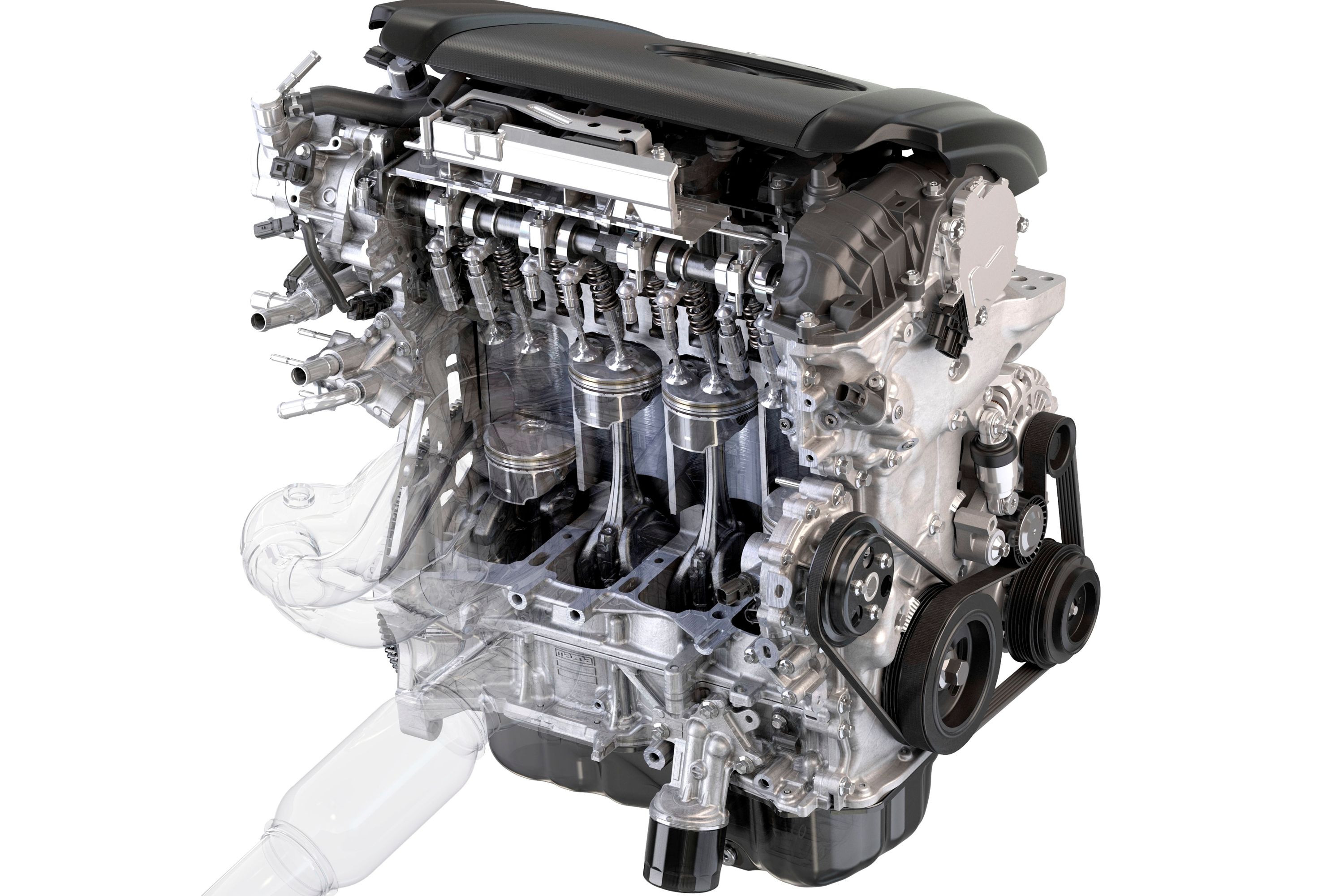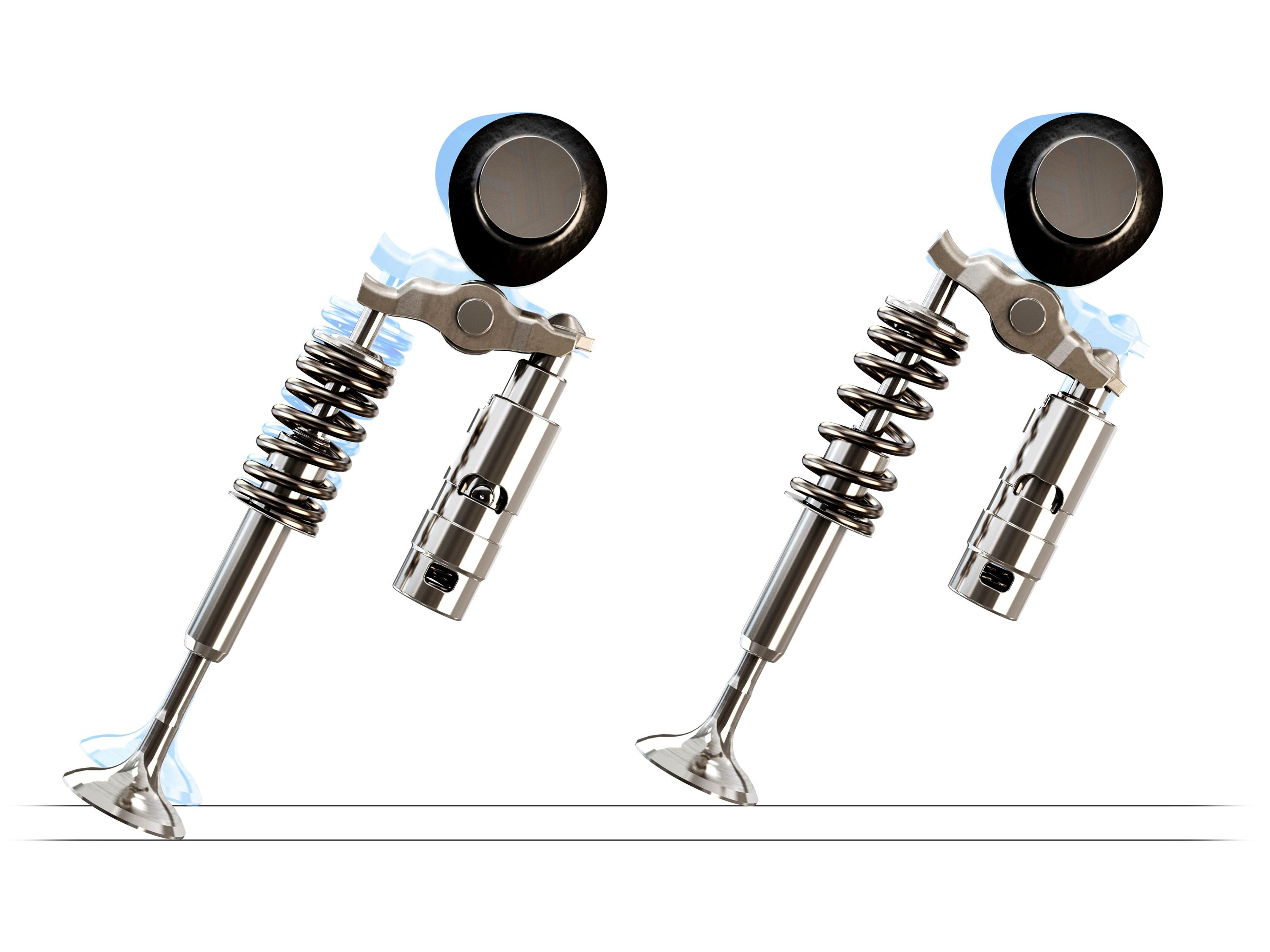
What is Cylinder Deactivation?
Cylinder deactivation technology is also called cylinder-on-demand (CoD), and is a clever use of technology that stops some of the cylinders of an internal combustion engine (ICE) from taking in fuel and air while it's running. In order to understand what cylinder deactivation is, a brief breakdown of how an ICE works is required. For an in-depth explanation, read our post on how combustion engines work here.
Understanding Internal Combustion
The basic idea is that this engine burns gasoline and converts it into energy to power the wheels. It does this by sucking a mixture of fuel and air into cylinders in the engine where a moving piston then compresses the mixture in each cylinder. Once compressed, a spark from the spark plug ignites the mix which causes the piston to be pushed back down again. Exhaust gasses are pushed out through the valves while the up-and-down motion of the pistons is converted to rotary motion by the crankshaft.
So, How Does Cylinder Deactivation Work?
Now that you understand the basics of internal combustion, cylinder deactivation technology may make more sense - during cruising, you don't necessarily need all the power the engine can provide, and you can save fuel by deactivating some of the cylinders. But how does such a cylinder deactivation system work?
When the computer brain in your vehicle detects that you aren't in need of all the power the engine can provide, a cylinder deactivation solenoid valve kicks in to prevent fuel and air from entering the cylinder. This means that the combustion process in some of those cylinders can't occur, and less fuel is used overall.
Engines that have this capability are sometimes referred to as a variable displacement engine, as the engine cylinder deactivation (CDA) system allows the engine displacement to change temporarily. For example, if half of a 4.0-liter V8's cylinders are temporarily turned off, the engine basically functions like a 2.0-liter V4 for the duration of the deactivation. A large engine running on all cylinders in low-power conditions like cruising at highway speed is inefficient. Turning it into a small engine temporarily can boost fuel economy by as much as 25 percent under certain driving conditions.
Advantages of Cylinder Deactivation Technology
The benefits of a system such as this include:
- An improvement in fuel efficiency
- Reduced emissions
- A reduction in pumping losses
- Optimized airflow in the engine at low load
- In diesels, more efficient exhaust after-treatment due to higher exhaust temperatures
Which Manufacturers Use Cylinder Deactivation Technology?
Between the 80s and early 2000s, several manufacturers toyed with the concept. Daimler, Mercedes-Benz, and General Motors all trialed the technology in the early aughts. Nowadays, several automakers use variable displacement technology. Some of the most notable ones are:
- Volkswagen Group: Volkswagen's Active Cylinder Technology was the first application of cylinder deactivation on a four-cylinder engine, starting with the 1.4-liter TSI engine. Today, the VW Group uses the technology on other engines as well, such as the group's 4.0-liter twin-turbocharged V8 engine.
- General Motors: Starting in 2005, GM applied its version, Active Fuel Management, to its Generation IV small-block V8 engine. The 2018 redesign of this system called Dynamic Fuel Management brought with it the ability to any number of cylinders in any combination.
- Stellantis: Originally developed by Mercedes during the Daimler-Chrysler years, the Multi-Displacement System was first used on Mercedes' V12 engines and on Chrysler's Hemi V8 from 2004. The Hemi V8 still uses the system today.
- Mazda: Mazda started widespread use of its own version in 2017 with the Mazda CX-5 compact crossover SUV - one of the most popular and best small SUV models on sale in the US.
- Honda: Honda started using its proprietary Variable Cylinder Management system in 2003 on the J family of V6 engines; it can switch the V6 between six-, four-, and three-cylinder operation.
- Ford: Ford started using cylinder deactivation in 2016 and the application of the technology on its small Ecoboost engine was the first application ever on a three-cylinder engine.
Cylinder Deactivation Problems
Today's cylinder deactivation systems are largely reliable, but they do introduce another layer of complexity that could go wrong. The systems are also limited in terms of what combinations of cylinders can be shut off without upsetting the engine's balance or causing undesirable noise output or vibrations. Engine mountings, flywheels, and vibration dampers can address some of these. The VW Group incorporates noise-canceling technology in the audio system to cancel the sound of its 4.0-liter V8 engine when it is in four-cylinder mode in some of its cars using the engine, such as the Audi A8.
Conclusion
Cylinder deactivation technology has been used with great success to improve the fuel efficiency and emissions of internal combustion engines, but development on this front is likely to stall as manufacturers divert development resources for their newest cars to EVs. Still, it has assisted us in reaching a level of engine efficiency that those brave '80s Cadillac engineers that tried and failed would hardly have thought possible today.


